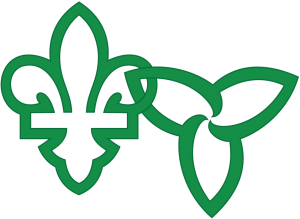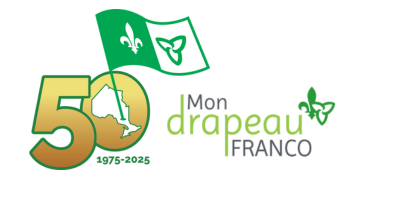Visit the monuments to la Francophonie


Mouvement d’implication francophone d’Orléans (MIFO)
Monument location:
Mouvement d’implication francophone d’Orléans (MIFO)
6600 Carrière Street
Ottawa, Ontario K1C 1J4
Unveiled: June 15, 2007
Bernard Grandmaître, Honorary President of Monuments de la francophonie d’Ottawa
Gilles Laporte, President of Mouvement d’implication francophone d’Orléans (MIFO)
This project was carried out by District 1 of Richelieu International.
The Richelieu Society was founded in Ottawa in 1944. It was renamed the Richelieu International in 1955 and incorporated 275 service clubs in seven districts and in a dozen francophone countries. The Society promotes la Francophonie and francophone culture through sociocultural and humanitarian efforts and youth involvement. District 1 has 20 clubs that cover Ottawa, Outaouais and eastern Ontario.
The Mouvement d’implication francophone d’Orléans (MIFO) was created in 1979. It promotes francophone culture and responds to the artistic, cultural, social, community and educational needs of the francophone community in Orléans. It offers a number of French-language services and programs through its Centre culturel d’Orléans, including La Ribouldingue (a toy and game store for kids), Petit Pinceaux educational centre, the MIFO studio, a music school, the Eugène-Racette Gallery, two improv leagues (MIFO and L.A.I.T.U.E.), and kids summer camps. MIFO also supports the Centre Séraphin-Marion d’Orléans and the Théâtre du Village.
The Franco-Ontarian flag
The Franco-Ontarian flag was created in 1975. It consists of two sections; the left section features a white fleur-de-lys (representing la Francophonie) on a green background, and the right section features a green trillium flower (representing Ontario) on a white background. The flag was recognized as an official symbol of Ontario by the Ontario Government in 2001.
Heritage
Ottawa’s rich francophone heritage is protected by many different institutions (museums, galleries, archival centres, cemeteries, commemorative sites, historical monuments, etc.) and in many ways (sculpture, art, buildings, collections, objects, documents, folklore, language, holidays, traditions, costumes, etc.). Community organizations such as the Societé d’histoire et de généalogie d’Ottawa (1945-2005), the Samuel-de-Champlain division of the Société franco-ontarienne d’histoire et de généalogie (1982), and the Regroupement des organismes du patrimoine franco-ontarien (1980) have dedicated themselves to showcasing Franco-Ontarian heritage and genealogy. Various archives (City of Ottawa Archives, Centre for Research on French-Canadian Culture, Archives of the University of Ottawa, private religious archives, etc.) and museums (Vanier Museopark, Cumberland Heritage Village Museum, Soeurs de la Charité d’Ottawa Museum, etc.) seek to guarantee that public and private sector documents will always be accessible. Their records include paper documents, electronic documents, historical publications, maps, blueprints, books, postcards, movies, photographs, etc.
Ottawa’s French-language culture, art and heritage
Theatre and dance
The arts play a large role in Franco-Ontarian identity. During the 19th century, the first French-language theatre productions were staged in church halls, schools, colleges and convents. It was only in the 20th century that French-language theatrical groups appeared. In 2007, Ottawa had four major professional francophone troupes: the Vieille 17, the Théâtre du Trillium, Vox Théâtre and La Catapulte. Private dance studios such as Classical Ballet Studio and the Groupe Dance Lab first appeared in Ottawa in the mid-1900s. Dancers and choreographers such as Julie West and Anik Bouvrette were famous in the 1980s and 1990s.
Visual arts and handicrafts
Arts classes have been offered in public and private schools in Ottawa since the mid-1900s. The Ottawa School of Art was founded in 1879, and the University of Ottawa offered painting courses long before the founding of its visual arts department in 1974. There have been many visual arts associations over the years. Many famous painters and sculptors have lived in Ottawa, including Flavien Rochon, Philippe Pariseau, Marie-Marguerite Fréchette, Annette Senécal de Bellefeuille, Cléophas Soucy, Roland Beauchamp, Henri Masson, Jean Dallaire, Gérald Trottier, Thérèse Frère, Bernard Poulin and Pierre Huot. Their works have been displayed in schools and art galleries all over the city.
Literature: journals, magazines, publishing houses and writers
Throughout Ottawa’s history there have been numerous French-language journals, magazines, writers’ organizations and publishing houses. The Centre franco-ontarien de ressources pédagogiques (CFORP) has been publishing resources and course materials since 1974. Famous writers include Benjamin Suite, Régis Roy, Rodolphe Chevrier, William Chapman, Jean Ménard, Emma-Adèle Lacerte-Bourgeois, Michelle Le Normand, Simone Routier, Claire Martin, Marie-Rose Turcot, Hélène Brodeur, Jean Marc Dalpé, Pierre Pelletier, Andrée Christensen, Daniel Poliquin, Andrée Lacelle, Maurice Henrie and Jean Fahmy.
Music
The francophones in Bytown and Ottawa had a rich and vibrant culture and played a key role in the local music scene. Notable 20th century groups included the Concerts Tremblay (1929-1963), the Troubadours de Bytown (1927-1930), the Petits chanteurs céciliens (1931-1942), the Symphonie De La Salle (1930s to 1940s), the Palestrina Choir (1946-1958), the Poètes de la chanson (1947-1973) and the Orchestre symphonique des jeunes de l’Ontario français (1998). Famous artists included Eva Gauthier (mezzo-soprano), Jean Bonhomme (tenor) and Berthold Carrière (conductor). A number of groups played large roles in the popularization of French-language music in the 20th century. Famous contemporary artists include 33 Barrette, Suzanne Pinel, Donald Poliquin, Paul Demers, Deux Saisons, Les Hardis Moussaillons, Kif-Kif, Swing and Afro Connexion.
Radio and TV
The popularization of radio in the 1920s and television in the 1950s made it much easier to spread francophone culture. The first French-language radio station in the Outaouais region was CKCH (founded in 1933). The first French broadcasts in Ottawa were in the 1920s. Radio-Canada and Rogers (formerly Skyline) have been offering French-language TV programs for decades. Various French-language TV channels are available, including several stations from Quebec.
